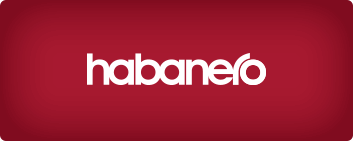The Calgary Board of Education knows a lot about what makes teachers and learners thrive. Working with them on a recent project changed the way I think about learning, the profession of teaching and why kids will love going to school in Calgary in the future.
In my dusty recollection, my teacher is droning through a stack of acetate overheads with grey marker notes about the different levels of government in Canada. Contrast that experience with today, when a distracted kid like me knows that the list of Canadian premiers’ names is just seconds away on his smart phone. If I was a student in this digital information world, I’m sure you wouldn’t find me in class that often.
Now, imagine a school where teaching is about designing opportunities for kids to become intrinsically motivated to learn in a way that is relevant to them as unique individuals.
Now, imagine a school where teaching is about designing opportunities for kids to become intrinsically motivated to learn in a way that is relevant to them as unique individuals. A school where every kid is encouraged to share their goals, aspirations, talents, thoughts, and feelings. This way, there’s less of a gap between the content, the teaching, and the relevance to the individual student.
The Calgary Board of Education (CBE) envisions this kind of world. It’s a deliberately different way of practicing the profession of teaching; a pedagogical approach called personalized learning.
Habanero helped the CBE develop a web-based tool, a portal called Iris, to achieve this innovative way of helping students thrive. To explain how it’s done, I'll share a short story from one of the sessions I had with the learning specialist during the design process.
I asked one of the learning specialists to take me through a scenario where a teacher would be using this workplace function of Iris. The workspace is a digital environment where a teacher can place select pieces of data from all the information sources within the portal and then organize the content in a way that makes sense to the educator and the students in the class.
The teacher thought for a moment and then described something that changed the way I think about teaching and learning. It was completely different than my experience as a student.
The scene went something like this:
“So imagine I am a grade four teacher and the tsunami in Thailand just happened. This is an important global event that we all need to make sense of, and the students should know what has happened. I would want to organize my thoughts about how the tsunami event relates to all the programs of study and at the same time think about each of the kids in my class. I'd want to look at each student’s profile and learning plan and bring that data into my workspace. I might make some of my own notes about possible learning tasks with those specific students in mind.”
So this sounds like everything I had been told about personalized learning, but I still didn’t quite get it. She went on to explain how understanding a student factors into the process of designing learning.
“I also might have a few students that I know are particularly motivated and academically inclined in physics and math, so I’d want to collaborate with a science teacher to see if we could include an opportunity to teach the students about tsunami waves with the current events as background. If that was the case, I would want to share my workspace with that science teacher and add their input to the workspace. These same students could take a leadership role during the lesson and the entire class could have content tailored to their personal interests and strengths. The goal is to challenge everyone but also set the students up for success and engagement with the material.”
This blew my mind. I had some dedicated teachers growing up, but none of them worked like this! In a future where information is available to anyone with Internet access, the traditional activities of teaching are being forced to shift. Being a teacher isn’t just about being the one with the knowledge and sharing it in ways to those that don’t yet know. That kind of skill is still important, but the activities to convey the information have to be more about showing how knowledge is useful, relevant and inspiring.
My conversation with the CBE extended into my career at Habanero. I realized that we excel when we are intrinsically motivated because the work we are doing aligns with our interests and talents. Work is better when we understand ourselves as learners, when our goals are matched with strategies that in turn align with our strengths, and we pay attention to conditions for success when we are working through challenges.
The CBE team taught Habanero about how to help learners thrive, and that’s made Habanero even better at living out our reason for being, which is to help people and organizations thrive.






